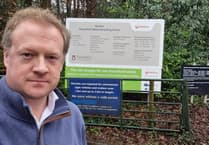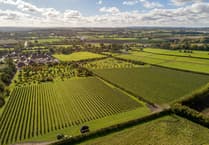RESIDENTS are being urged to have their say on local government boundaries, which could see a change in the way towns and villages are represented on Hampshire County Council.
The independent Local Government Boundary Commission for England is currently consulting on its draft proposals for new electoral-division boundaries across Hampshire.
The consultation closes on January 11.
But villages to the west, however, could see some alterations.
Alton is currently served by two councillors, one responsible for the town and the other for the surrounding rural area - which borders Bordon - effectively forming “a doughnut”.
However, the boundary commission is not keen on this arrangement, which it feels is “unlikely to reflect community identities and interests or communication links in the rural area”.
The proposal is for a new Alton Rural division - currently represented by Mark Kemp-Gee - to comprise of the parishes of Kingsley, Selborne, Bentley, Binsted, Chawton, Farringdon, Four Marks, Froyle, Medstead, and Worldham, with the Holybourne area of Alton Town division and Newton Valence added to minimise any “electoral imbalance”.
These changes will, in effect, “avoid a division which is completely surrounded by an Alton Rural division”.
Looking east, the Headley and Liphook division, held by Ferris Cowper, is not set to see any alterations.
However, the boundary commission have received a submission which suggested a name change to include the settlements of Liphook and Grayshott.
But a spokesman for the boundary commissiuon said: “As the electorates of Headley and Liphook comprise the majority of the population of the division, we consider both areas should be reflected in the division name.
“We consider this division reflects community identity and provides for good electoral equality.”
The commission’s draft recommendations propose that the county council should have 78 county councillors in the future: the same as the current arrangements.
The proposals mean those councillors would represent 72 single-member electoral divisions and three two-member electoral divisions across the county.
Max Caller, chairman of the commission, said: “We are asking local people to log on to our website or visit their local library to have a look at our proposals for new division boundaries for Hampshire.
“We are keen to hear what local people think of the recommendations and to tell us if they agree with the proposals. If you don’t agree with the boundaries we have drawn, we would like to hear alternatives.
“Our review aims to deliver electoral equality for voters in elections to Hampshire County Council.
“This means that each county councillor represents a similar number of electors so that everyone’s vote in county council elections is worth roughly the same regardless of where you live.
“We also aim to ensure that the council’s divisions reflect, as far as possible, the interests and identities of local communities across the county.
“We will consider all the submissions we receive whoever they are from and whether your evidence applies to the whole of Hampshire or just a part of the county.”
Addressing the current arrangement for the Whitehill, Bordon and Lindford division the boundary commission said: “Our draft recommendations are based on the countywide proposals received for East Hampshire and are identical to the existing arrangements in this area.
“We consider this division reflects community identities and provides for good electoral equality.”
n People can visit the commission’s interactive consultation portal at www.consultation.lgbce.org.uk to look at detailed maps of the proposals and get all the advice they need to make a submission during the consultation.
Hard copies of the commission’s report and maps have also been made available to view at council buildings and libraries.



